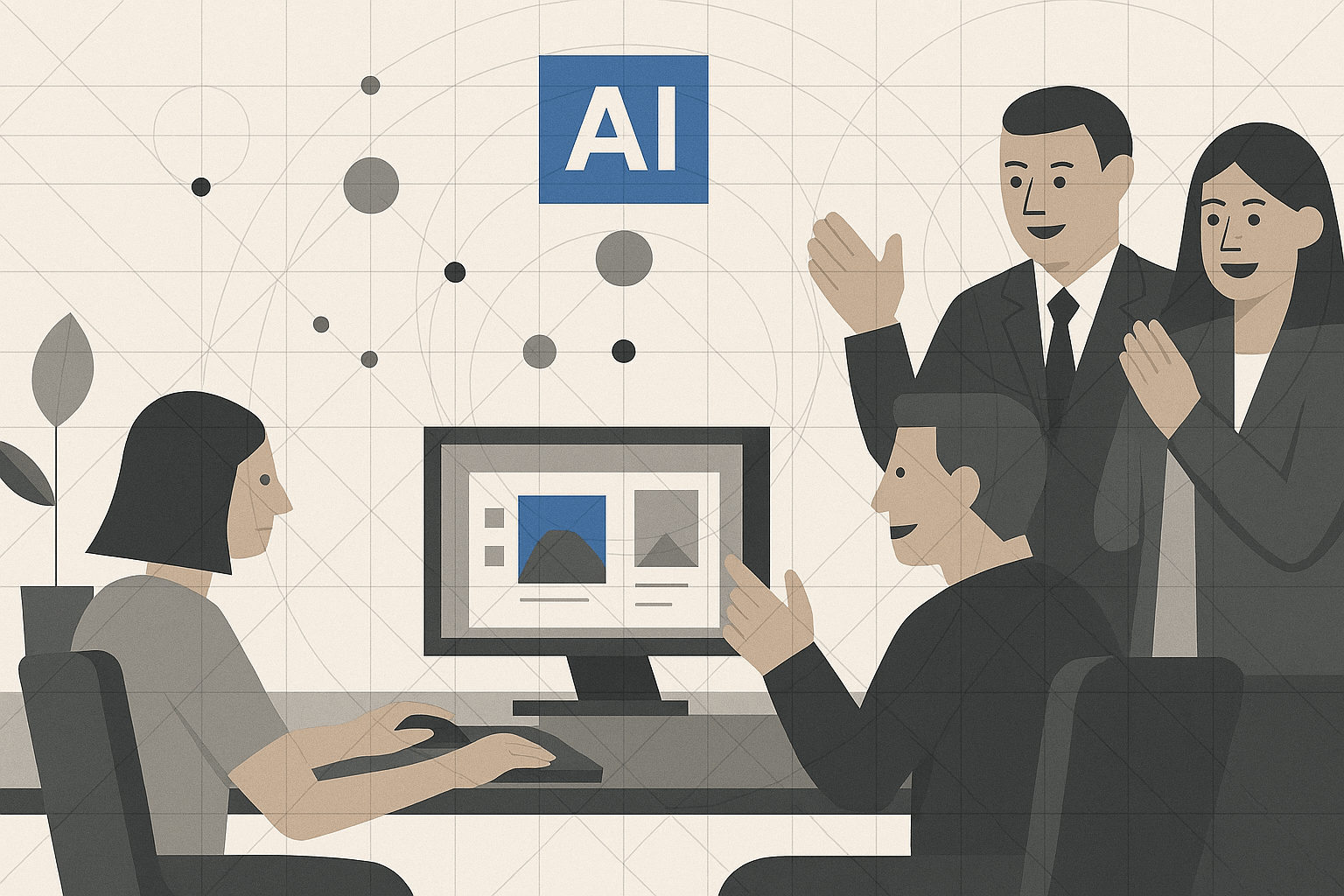The Great Divide
Across industries, AI is reshaping work at an unprecedented pace — but not in a way everyone’s comfortable with.
- In boardrooms, AI is heralded as a silver bullet for efficiency. The cost‑savings projections are dazzling, the automation roadmaps intoxicating. Entire departments are restructured on the promise of “doing more with less.”
- In creative studios and product teams, AI often lands with a thud. Fear brews that it’s a silent replacement plan — that ideas will be commoditized, human nuance will vanish, and careers painstakingly built on craft will be diminished or automated out of existence.
This fear vs. efficiency standoff is stalling potential. Both sides are playing not to lose, rather than playing to win.
If we keep it that way, AI’s biggest contribution won’t be innovation — it will be polarisation.
Why Leaders Default to the Cost‑Cutting Lens
Executives have every incentive to chase savings:
- Shareholder pressure: Quarterly performance targets demand visible gains.
- Competitive benchmarks: Rivals are touting AI‑driven productivity leaps — no one wants to lag.
- Tech vendor influence: Platform demos are built to seduce with headline ROI stats, not creative potential.
But there’s a problem. The easiest AI use‑cases to implement are also the most replace‑y. Remove steps, remove people. It’s a straight line on a spreadsheet.
The risk? Strip out too much human context, and you hollow out what makes your product or brand distinctive. Customers feel the gap long before the financial models do.
Why Creatives Default to the Defensive
Creatives aren’t technophobes — far from it. The best ones are constantly adopting tools, techniques, and mediums.
The fear around AI comes from three places:
- Loss of control: If your work can be machine‑generated in seconds, how do you argue for the value of your craft?
- Dilution of quality: Early AI outputs can feel generic, sterile, or derivative — reinforcing the belief it can’t match human standards.
- Opaque decision‑making: Corporate AI initiatives are often announced top‑down, with little transparency on the “why” or the “how.”
Defensiveness turns into disengagement. Instead of experimenting with AI, creatives avoid it, missing the chance to shape its role in their workflows.
The Consequences of Staying Apart
When leadership and creative teams stay on opposite ends of the AI debate:
- Opportunities vanish. Projects that could use AI to extend creative reach or accelerate iteration never happen.
- Trust erodes. Each group assumes the other doesn’t “get it” — creating a cultural cold war.
- Innovation slows. Instead of AI being a force multiplier, it becomes a wedge issue.
And when innovation slows in today’s market, irrelevance creeps in quickly.
Reframing AI’s Role: From Either/Or to Both/And
The middle ground isn’t compromise — it’s mutual amplification.
- Leadership goal: AI enables efficiency and enhances the brand’s creative edge.
- Creative goal: AI removes repetitive friction and leaves more space for high‑impact, human‑only work.

When both objectives are visible in the same roadmap, the conversation shifts from “replacement” to “redistribution.”
Building the Middle Ground: A Practical Playbook
A. Transparency First
- Leaders: Share the business case beyond cost savings. Outline efficiency and innovation targets.
- Creatives: Ask for clarity on intended AI use‑cases — and suggest additional ones that protect or expand human value.
B. Co‑Design AI Workflows
- Run small pilots where leaders and practitioners define together:
- Which tasks are automated
- Which tasks require human sign‑off
- Which areas AI should never touch (e.g., cultural tone‑setting, sensitive stakeholder messaging)
C. Create “Human Quality KPIs”
- Track originality, emotional resonance, customer delight — not just output speed.
- Use these KPIs as non‑negotiables in AI deployments.
D. Upskill in Tandem
- Leadership invests in AI literacy for creatives.
- Creatives invest in business literacy to understand how efficiency targets affect survival and growth.
The Culture Shift Required
From Leaders:
- See AI not just as a scalpel to cut costs, but as a lens to see new creative possibilities.
- Reward teams for using AI to make the human work better, not just the process faster.
From Creatives:
- Engage with AI hands‑on before rejecting it.
- Treat AI fluency as part of your craft skillset, like typography or colour theory.
Both sides need to replace fear with curiosity.
Practical Guardrails for Healthy AI Adoption
| Guardrail | Why It Matters | Who Owns It |
|---|---|---|
| Human sign‑off on all external‑facing creative | Maintains brand voice, cultural alignment | Creatives & Brand Leads |
| Regular AI performance reviews | Avoids “set and forget” degradation of quality | Project Leads |
| Shared innovation backlog | Captures AI ideas from all levels | PMO / Ops Teams |
| Public use‑case registry | Builds trust through transparency | Leadership |
The Shared Win: Innovation at Scale
When AI is treated as a bridge, not a wedge, two things happen:
- Leaders get the efficiency story they can take to the board.
- Creatives get the time and mental space to push work into truly original territory.
That’s when the magic happens — where efficiency funds invention, and invention protects long‑term relevance.
In Closing
The reality is simple: AI isn’t inherently a cost‑killer or a creativity‑killer. It’s a force multiplier for whatever intent drives it.
If the intent is only to save money, you’ll save until the brand’s differentiation is gone. If the intent is only to protect craft from change, you’ll protect it right into stagnation.
The future belongs to the companies that can get both sides in the same room, align on outcomes that include both efficiency and human quality, and then deploy AI like it’s a scalpel for possibility — not just an axe for headcount.


